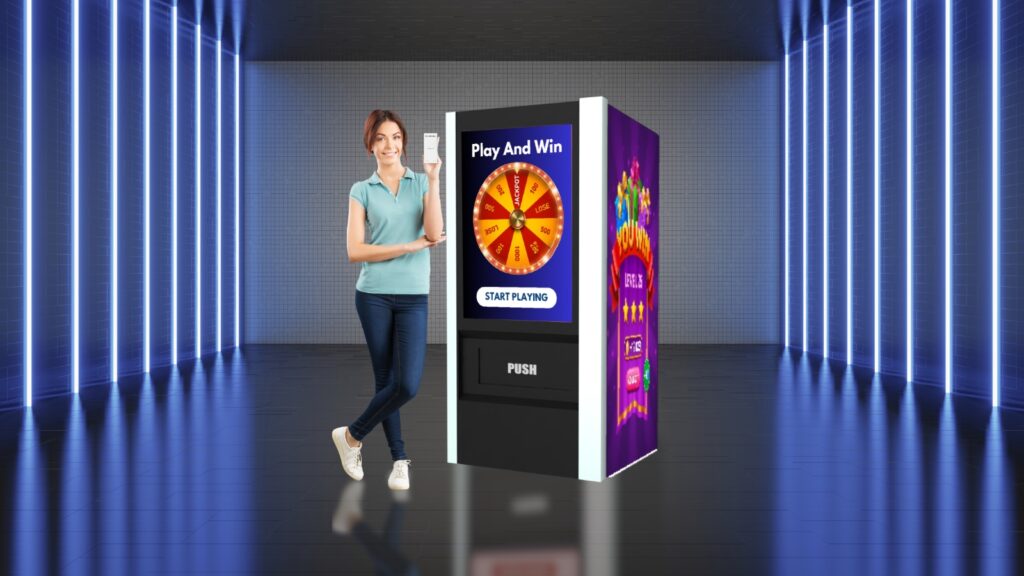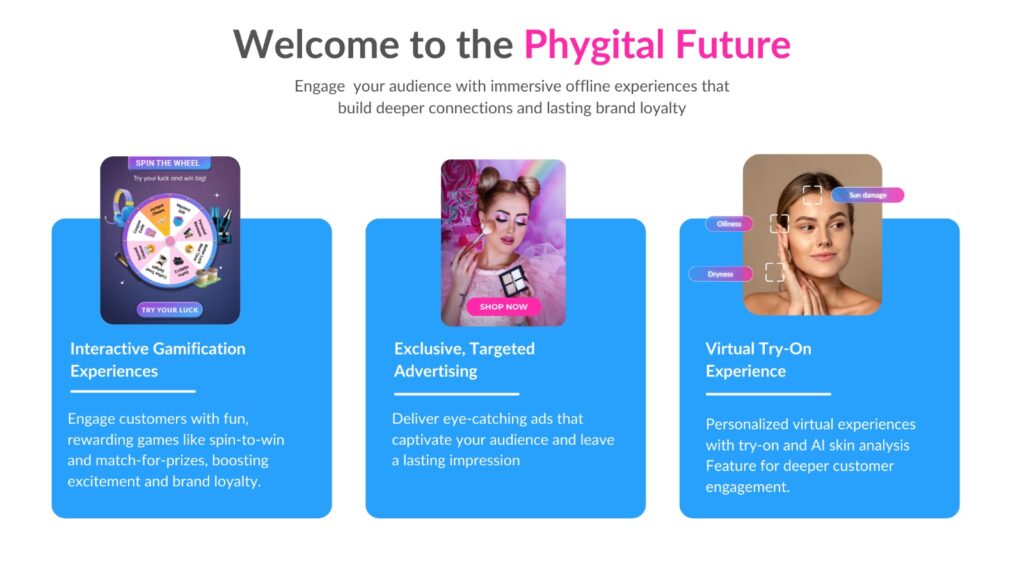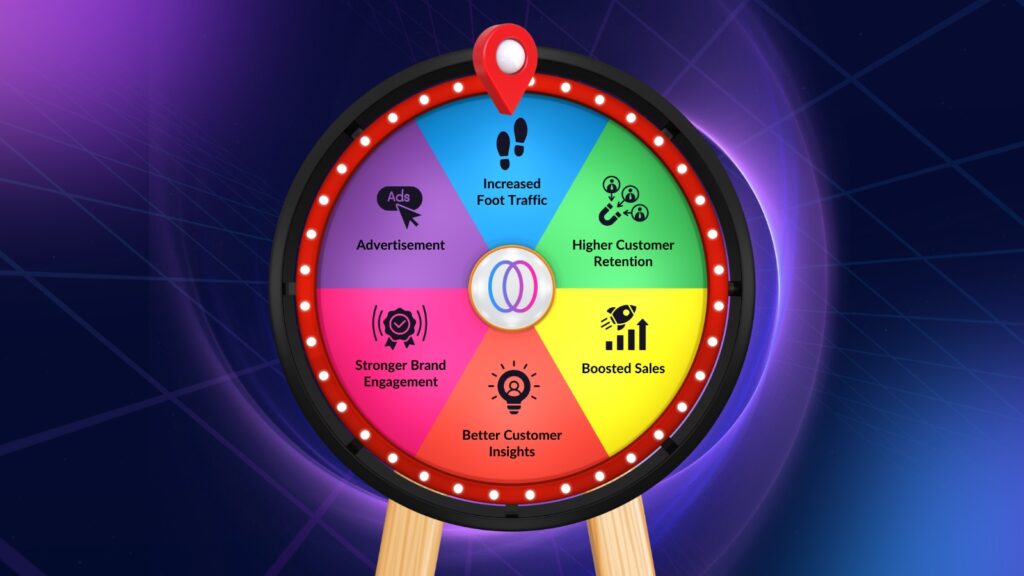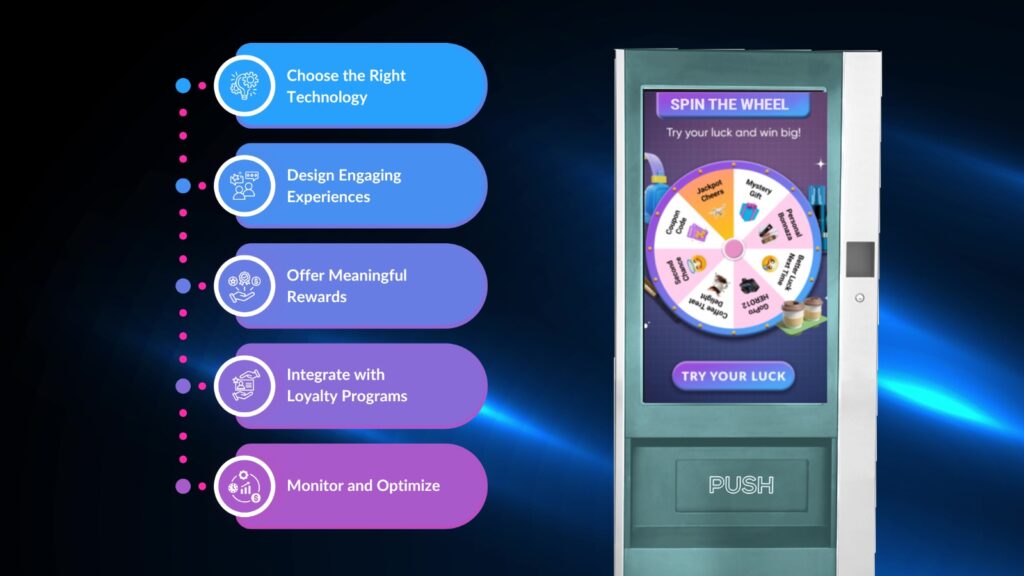To make it engaging; make it fun!
Gamification is one of the most extraordinary trends shaping the future of retail, with the industry expected to reach $145.75 billion in 2032 from $21.81 billion in 2024.
As digital experiences are fast becoming the core of consumer behavior, retailers worldwide are leveraging gamification strategies to enhance customer acquisition, engagement and retention. Tech-driven touchpoints, like Interactive gamified kiosks, in this respect, are the fastest growing trends that are redefining how customers shop, transforming mundane transactions into rewarding and enjoyable experiences.
Did you know, that gamification can increase customer acquisition by up to 700%, increase customer retention by around 22% and increase engagement by 100% – 150%.
In this blog, let’s dive deeper into the realm of gamified kiosks in retail, how it benefit businesses and customers, and how retailers can implement them effectively.
What is Gamification in Retail?
Gamification in retail involves incorporating game-like elements such as rewards, loyalty points, challenges and interactive storytelling into shopping experiences, making an otherwise ordinary process exciting and captivating. Whether through digital scratch cards, loyalty-based games, or interactive kiosks, retailers can capture customer interest and create memorable shopping experiences with gamified shopping. This ultimately drives customer participation and loyalty.
Take Coca-Cola’s Happiness Machine (2009) as an example. This uniquely interactive kiosk was designed with the purpose of surprising customers with unexpected happiness by offering surprise beverages free of cost, loyalty points or a variety of other merchandise. A drive that had won CLIO’s prestigious Gold Integrative Award (2010) at their 51st convention, Coca-Cola had made a transformative leap in gamification in retail built around creating deep and meaningful connections with customers.
The result –
- Skyrocketing engagement
- A flood of positive testimonies
- Long-term outstanding brand impact
Top Features of Gamified Kiosks
Gamified kiosks supersede the conventional vending kiosks in retail for the key reason that they serve as smart interactive stations within stores that not only simplify the purchase process but engage customers in various ways to foster long-term relationships as well.

Here are some standout features that differentiate gamified kiosks from other retail counterparts –
- Rewards and Incentives to support gamified shopping with effective programming to help customers earn points, and receive discounts or freebies by engaging with the kiosk.
- Interactive touchscreens to support gameplay in simple layouts for easier engagement.
- Reward/loyalty programs integrated with purchases to make tracking and redeeming easy.
- AI-driven system integrations for customer behavior analysis to provide hyper personalized experiences including tailored offers and recommendations.
- Interactive Gaming Interface to support a variety of games like digital spin-the-wheel games, trivia, rebus puzzles or even augmented reality challenges to unlock discounts or freebies.
- Social Media Integration allows users to share their in-store experiences on social platforms of their choice, amplifying brand reach.
- Data storage and tracking to help individual customers track and store their progress.
- Data Collection and insights for retailers to track customers, demographics, preferences and behaviors to refine their marketing strategies.
The Role of In-Store Experiences in the Future of Retail
There’s something about brick-and-mortar that e-shops cannot yet replicate.
As per market predictions, by 2027, 22% of all retail sales will be online. This translates to the fact that in-store shopping will continue to dominate the market. Even then, physical retail stores will need to reinvent themselves in order to remain relevant, as online shopping continues to grow and get more realistic with AI, AR and VR.

Transformative in-store experiences like those created with gamified kiosks, in this respect, are playing a crucial role in the future of retail. Top experiential elements integrated with gamified kiosks include:
- Immersive product demonstrations for heavily personalized product search.
- Virtual-Try On enables customers to test beauty products, eyewear, or accessories in real time, enhancing confidence in purchase decisions and reducing returns.
- Augmented reality experiences that allow customers to visualize products in their real-world environment.
- Loyalty-driven gamification, where customers get to earn points and rewards through repeat visits and interactions.
- Customer storytelling, where customers get to share their stories and have the same featured in the brand’s / store’s campaigns
Creating lasting brand impressions, followed by increased foot traffic and enhanced CX, are the instant outcomes of gamified kiosks in the realm of in-store experiences.
Benefits of Gamification in Retail for Retailers
The adoption of gamified kiosks in retail stores brings multiple advantages:

- Increased Foot Traffic: Interactive experiences draw customers into stores, making offline kiosks more attractive.
- Higher Customer Retention: Gamification in retail fosters brand loyalty by rewarding repeat visits and purchases.
- Boosted Sales: By incentivizing purchases through rewards and challenges, gamified kiosks drive higher transaction values.
- Better Customer Insights: Data collected from kiosks allows retailers to understand shopping patterns and preferences.
- Stronger Brand Engagement: Interactive experiences help brands connect with consumers on a deeper level.
- Advertisement: Gamified elements turn ads into interactive experiences, increasing engagement, recall, and conversion rates.
Examples of Brands Using Gamified Kiosks
Top brands the world over have set the stage for gamified retail with the successful integration of gamification into their retail strategy. Here are a few notable examples:
- Nike: The launch of the Nike Fuel Box back in the summer, of 2014, to dispense Nike Merchandise with the points earned through their wrist-worn fitness tracker, Nike FuelBand. Nike stores later rolled out more gamified kiosks where customers can engage in virtual sports challenges to earn discounts on products.
- Sephora: The Gamified Beauty Insider Loyalty Program launched by Sephora in the name of ‘Beauty Insider Challenges’ is a pioneering approach in gamified shopping. Challenges like ‘Ready-Set-Sephora consist of 4 stages: checking out and buying online, picking up in-store, signing up for Sephora text alerts and adding samples at check-out. On completion of each stage, customers would earn 100 bonus points that can be redeemed for Beauty Insider Cash.
- KFC, Japan: KFC, Japan, had gamified their shrimp food menu launch with a game called ‘Shrimp Attack’ in collaboration with Nintendo. In this game, customers had to defend a KFC castle from attacking shrimps and slice them to earn points that could later be used to earn discounts in meal combos in the nearest outlets. With the eventual increase in game registrations by 22%, the brand experienced a whopping 106% growth in sales.
How to Implement Gamified Kiosks in Retail Stores
Gamification in retail through Kiosks should resonate with the brand image, besides living up to the expected standards of convenience and utility for customers.

Here are a few crucial steps that retailers need to follow in order to incorporate gamified kiosks in retail that would never go wrong:
- Choose the Right Technology: Invest in interactive touchscreen kiosks with engaging software.
- Design Engaging Experiences: Incorporate game mechanics that align with your brand and customer interests.
- Offer Meaningful Rewards: Ensure that the incentives provided are attractive enough to drive participation.
- Integrate with Loyalty Programs: Link gamification with existing loyalty systems to maximize customer retention.
- Monitor and Optimize: Use data analytics to track engagement and refine the gamification strategy over time.
Gamification in Retail – Final Thoughts
Gamified kiosks and interactive in-store experiences are shaping the future of retail, making shopping more dynamic, enjoyable, and rewarding. By leveraging engaging and relevant gamification strategies, retailers can increase customer engagement / CLV, drive sales and stay competitively ahead phenomenally. As consumer expectations continue to evolve, embracing gamification in retail will be key to delivering immersive and memorable shopping experiences, bringing customers back for more.

